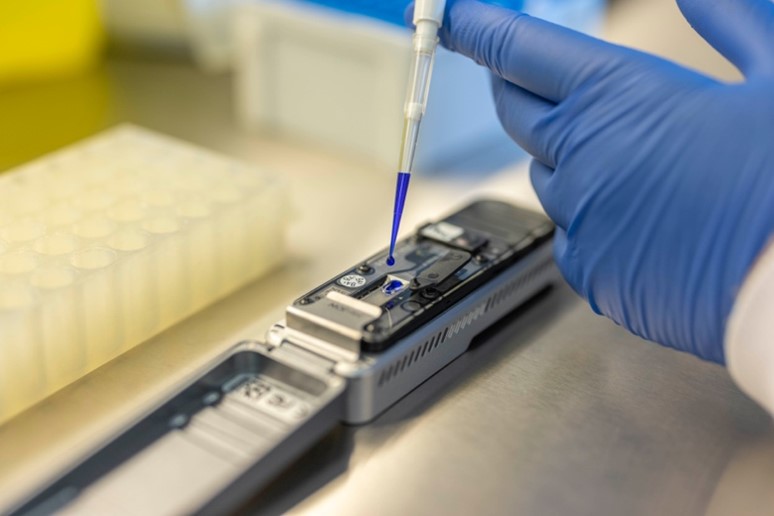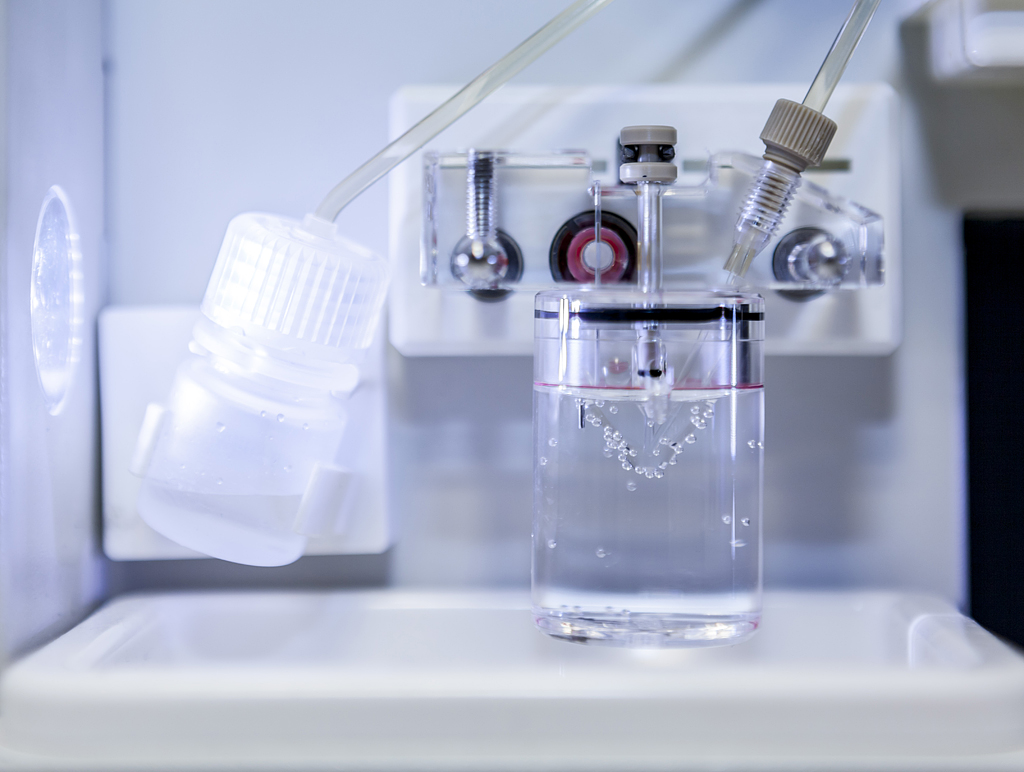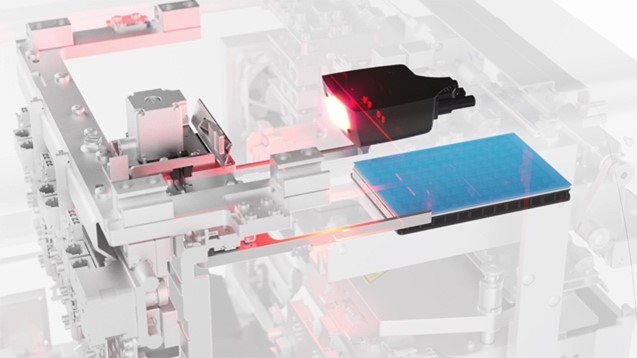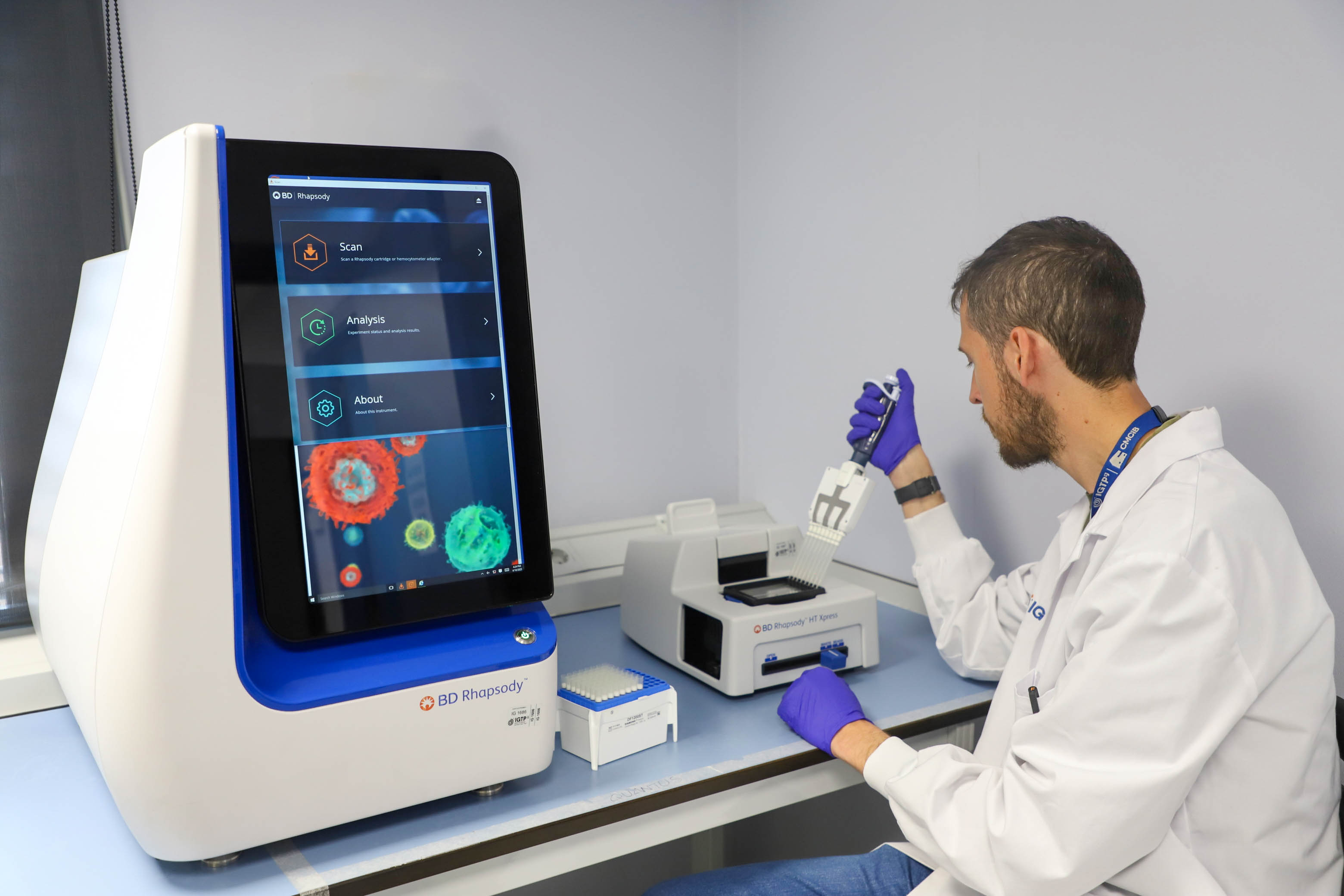Translational Genomics

Two MiSeq® Personal Sequencer (Illumina) machines
High-throughput sequencing equipment that can generate up to 25 Gb per run and 30M reads up to 2x300bp in a maximum of 384 indexed samples. Both use Sequencing By Synthesis (SBS) technology, which involves amplification, sequencing, and data analysis in a single instrument using the RTA v1.18.54.0 (Real Time Analysis), MCS v2.6.1.1 (MiSeq Control Software), MSR 2.6.2.3 (MiSeq Reporter) software, and cloud data storage (BaseSpace).

NextSeq™ - 2000 (Illumina)
High-throughput sequencing equipment that can generate up to 540 Gb per run and 3.6B reads in paired-end runs. The system uses Illumina's proprietary Sequencing By Synthesis technology (XLEAP-SBS chemistry) and generates reads with a Quality Score >85% of bases higher than Q30. It can analyse results locally or remotely connect to the DRAGEN Bio-IT FPGA secondary analysis system.

MinION System (Oxford Nanopore)
It is a high-throughput sequencing system based on the use of nanopores suspended on a membrane that allow the passage of nucleic acids (native DNA and RNA). Base identification is performed by calculating the changes in electric current that occur across the membrane. It generates ultra-long reads (> 4 Mb) and up to 50 Gb of data in 72-hour runs at 420 bases/second.
Suitable applications include the study of whole genomes/exomes, metagenomics, targeted sequencing, whole transcriptome (cDNA), smaller transcriptomes (direct RNA), methylation studies, detection of chromosomal translocations, and detection of triplet expansions.

ABI Prism 3130xl Genetic Analyzer (Applied Biosystems)
Sequencer with 16 capillaries for 96-well or 383-well plates, CCD detection camera and multiline argon ion laser with primary excitation at 488 nm and 514.5 nm. Software acquisition Data Collection v3.1 and analysis programmes Sequencing Analysis v5.4, GeneMapper v4.1 and SeqScape 2.7.

4150 TapeStation® (Agilent)
This automated electrophoresis system analyses nucleic acids (gDNA, DNA or RNA fragments or libraries) in a capillary support (ScreenTape) and acquires images. It allows to calculate the size of nucleic acids (bp), to perform quantitative/qualitative analysis using the GeneTools software with an embedded system for the comparison of bands. This system uses a very small sample volume (1-2 µL) and readings can be performed in single tubes or 96-well plates.

Robotic EpMotion 5070 Station
The robotic EpMotion 5070 station is a system for dispensing liquids. It has two tools of one and eight channels each that dispense volumes of 1-50 µL. It can pipette volumes of 1-2 µL with or without contact. It has a precision of less than 2% cv at 1 µL. It has an optical sensor to detect and automatically calculate the volume of liquid, labware and tips. It is compatible with tubes (0,2 mL to 50 mL) and up to 384-well microplates.

Real time qPCR LightCycler®480 (Roche Diagnostics)
This system supports both 96-well and 384-well plate formats. It is fitted with a xenon lamp, emissions at 430-630 nm, filters with excitation wavelengths at 440, 465, 498, 533 and 618 nm, and emission wavelengths at 488, 510, 580, 610, 640 and 660 nm, which allows the detection of the most common fluorochromes (FAM, NED, ROX, SYBR, TAMRA i VIC). LightCycler® 480 programme for acquisition and analysis and LightCycler® Probe Design Software 2.0. 1.

QIAcuity One Digital PCR System (Qiagen)
It is a digital PCR system based on the use of nanoplates that fragment each sample into thousands of partitions where each individual or multiplexed PCR reaction takes place. It has a detector system with up to 5 fluorescences (5plex instrument) and is equipped with the QIAcuity Software Suite for loading and analysis. The nanoplates can quantify between 24 and 96 samples, and between 8.5K and 26K partitions per sample can be obtained. The system is designed for the detection of mutations, copy number variation (CNV), gene expression studies, gene editing analysis, etc.

BD Rhapsody™ Express Single Cell Analysis System (Becton Dickinson)
The BD Rhapsody™ Express Single-Cell Analysis System is a benchtop instrument designed for the gentle and efficient capture and barcoding of single cells, facilitating downstream genomic and proteomic analyses. Is a Microwell-Based Partitioning instrument that utilizes a proprietary microwell array with over 220,000 partitions, allowing cells to settle into microwells by gravity without the need for fluidic pumps. The cartridge has a volume of ~600 µL, enabling the loading of dilute cell suspensions without the need for concentration into very small volumes.
